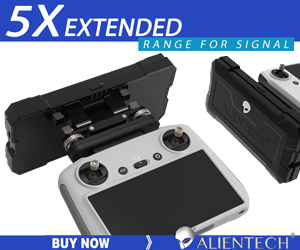Assuming you select Shutter priority, (S) you can set it to 1/60 to follow the known rule, and then you have ISO and Aperture to play with in order to get a proper exposure. In general, ISO should be kept low (100-400) to avoid noise so keep that in mind too.
This last part needs clarification - if you use Shutter or Aperture priority, the drone changes the opposite parameter to the setting
automatically which you do not want in most video situations. For stills photography it would be perfectly fine though. You want ISO at 100 at all times for video unless at F2.8 with no ND filter and your desired shutter speed you cannot get the correct exposure - raising ISO is an absolute last resort if image quality is a concern.
Also, never use continuous autofocus - the
M2P does not have phase detect autofocus and it is horrible - most people can lock it at infinity for good results.
I'm going to start flying with manual settings for the camera and video on the M2 and was wondering if there are any good tutorials out yet for settings. I set the ISO to 100 and I can set the aperture on the fly, but the shutter speed confuses me a little when switching back and forth form camera to video. Any professional input would be appreciated. Thanks!
There are no best camera settings, it is entirely scene dependent, but there are some best practices:
- For video you are going to want to always fly in full manual mode to avoid fluctuations in exposure which can easily ruin the footage. Keep in mind the drone can only expose for one thing at a time, so try and balance the scene.
- White balance should also be locked for best results, but if it's sunny out and you leave it on Auto, you are probably OK. Best practice is still to set it manually (I.e. Sunny).
- Try to keep your shutter speed around double the frame rate (this will be 1/60 for 30fps video), but you can play with that a bit with no ill effects. For example if you're flying close to something, and especially if you are flying fast, chances are you will want a slightly higher shutter speed to avoid too much motion blur on the scene.
- Start using ND filters when the desired exposure cannot be achieved by 1/60 shutter (or whatever you decide to use), ISO100 and F4 (or whatever you determine is your acceptable minimum aperture).
- After F4, diffraction starts to ruin the image on the
M2P - how soon you notice this is going to depend on how picky you are. This is a physical property of the image sensor and not a weakness of the
M2P itself. The range you should target is F2.8-F4 for maximum image quality, possibly up to F5.6 if you aren't picky. Personally I would leave it at F4 and only change it in a pinch, but I am extremely picky and do not represent everyone.
- Always use ISO 100 for the cleanest image. Only raise it when the shutter speed combination along with no ND filter requires it, otherwise leave it at 100. For stills, you will probably have a greater leeway here for what is acceptable to you with regards to noise, and since long exposures on drones are virtually impossible, at some point you will need to raise it if you shoot in low light.
- Make sure you have a memory card that has a
minimum sustained write speed greater than 12.5MB/s. Note this is
NOT the advertised theoretical maximum instantaneous transfer speed the manufacturer puts on the packaging. Look for the "V30" or "U3" symbols on the card to guarantee the minimum sustained write speed is enough. If you do not use a fast enough card, your 4K footage will drop frames.
- Do not use continuous autofocus (AF-C). Your image will drift in/out of focus mid-video which will ruin it. Lock the focus at infinity for most situations - don't worry, the sensor is so small and the distances most drone footage is shot at will give you almost infinite depth of field. The reason AF-C is so bad on the
M2P is it is contrast-detect AF and not phase detect AF. Contrast detect AF is essentially a guess and check algorithm which slowly narrows in on best focus. Phase detect autofocus allows for instructions that tell the focus elements in a lens exactly how far to move
and in what direction, so you do not get any hunting if it's working properly.










